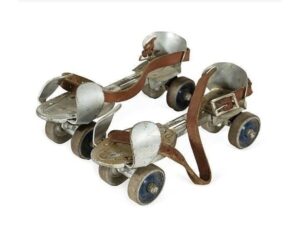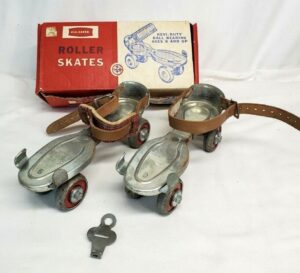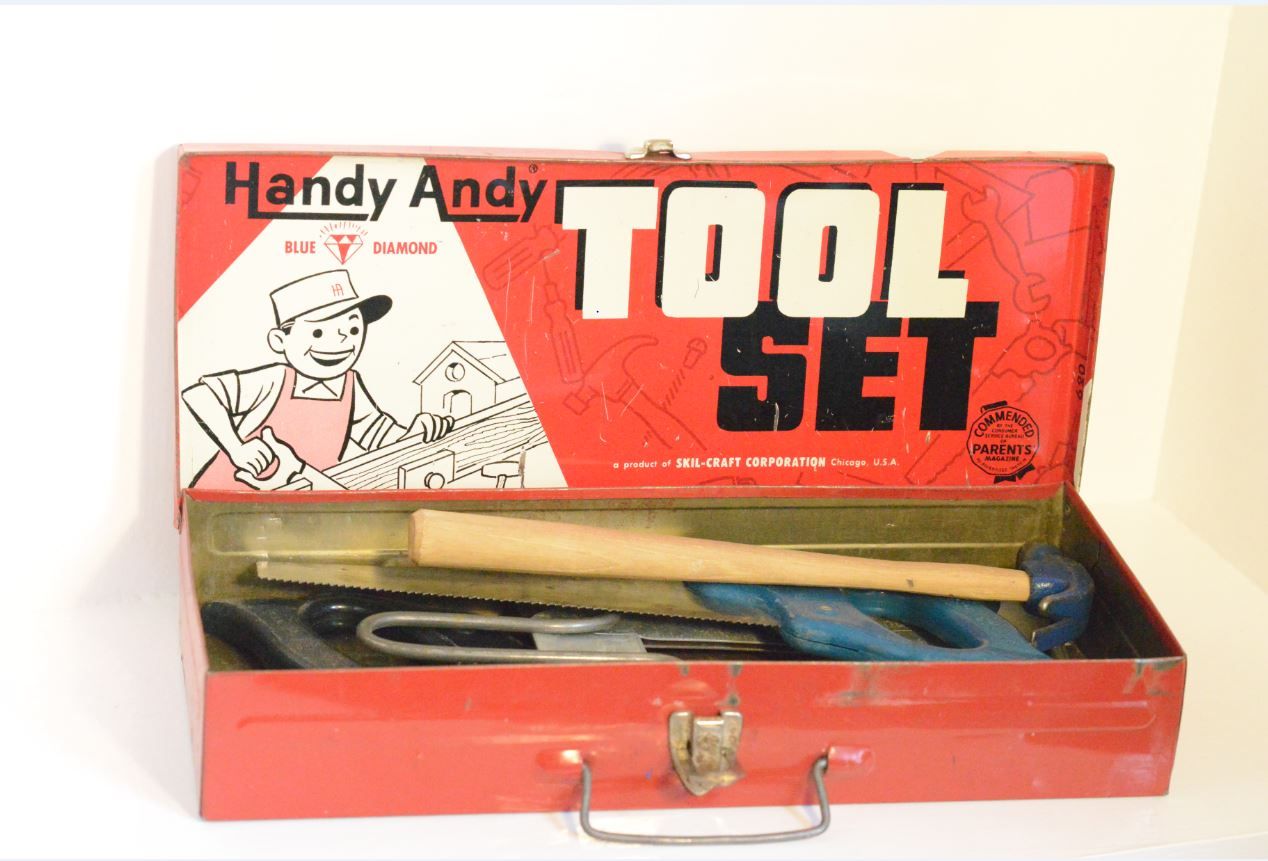The Metal Roller Skates of Mid-Century America: A Forgotten Icon of Childhood Recreation
Exploring the industrial design, cultural significance, and lasting legacy of the adjustable metal roller skates that defined outdoor play from the 1950s through the 1970s
Introduction: When Childhood Met Industrial Engineering
In the landscape of mid-20th century American childhood, few objects embodied the intersection of industrial innovation and recreational freedom quite like the adjustable metal roller skates that dominated sidewalks and driveways from the 1950s through the 1970s. These distinctive contraptions, with their heavy steel plates, leather straps, and mysterious adjustment keys, represented a unique chapter in the evolution of recreational equipment and childhood play culture.
To modern observers, these metal roller skates might appear crude or even primitive compared to contemporary inline skates or smooth-wheeled recreational footwear. However, they represented sophisticated engineering solutions to the challenges of creating affordable, durable, and adjustable recreational equipment during an era of rapid suburban expansion and growing emphasis on outdoor childhood activities.

The story of these metal roller skates encompasses not just product design and manufacturing history, but also broader themes of American childhood culture, suburban development, family economics, and the gradual transition from industrial-era recreational equipment to the consumer-oriented sporting goods that would dominate later decades.
Chapter 1: The Design Revolution of Adjustable Recreation
Industrial Engineering Meets Childhood Play
The metal roller skates of the 1950s-1970s era represented a significant advancement in recreational equipment design, incorporating adjustable mechanisms that allowed a single pair of skates to accommodate growing children over multiple years. This adjustability feature was revolutionary in an era when most recreational equipment was designed for specific sizes and had limited adaptability.

The fundamental design consisted of a heavy steel base plate equipped with four metal wheels arranged in a traditional quad configuration. The metal construction provided exceptional durability, allowing these skates to withstand the rough treatment typical of active children’s play while maintaining structural integrity across years of use. The weight of the metal components, while substantial by modern standards, contributed to the skates’ stability and longevity.
The leather strap system that secured the skates to regular shoes represented an elegant solution to the sizing challenge that had previously required separate skate purchases as children’s feet grew. These sturdy leather straps, reinforced with metal hardware, could accommodate various shoe sizes and styles while providing adequate security for active recreational use.
The Innovation of the Adjustment Key
Perhaps the most distinctive and memorable feature of these vintage roller skates was the specialized adjustment key that accompanied each pair. This small metal tool, typically measuring about three inches in length, served as both a practical necessity and a symbol of ownership that children guarded carefully throughout their skating careers.
The key’s primary function was to operate the skate’s length adjustment mechanism, which allowed users to extend or contract the metal base to accommodate different shoe sizes. This system typically involved a threaded adjustment mechanism that could be tightened or loosened using the key’s specialized end, which was designed to fit precisely into the skate’s adjustment hardware.
The engineering elegance of this system lay in its simplicity and effectiveness. By turning the key in one direction, users could extend the skate platform to accommodate larger shoes, while turning it in the opposite direction would contract the platform for smaller feet. This mechanism allowed a single pair of skates to serve children across several years of growth, making them an economical choice for families during an era when recreational spending was more carefully considered.
The Critical Importance of Key Retention
The relationship between the skates and their adjustment keys represented one of the most memorable aspects of owning these recreational devices. Parents and children quickly learned that losing the key essentially rendered the skates obsolete, as replacement keys were not readily available and often cost nearly as much as purchasing new skates entirely.
This dependency created a culture of key protection among skating enthusiasts, with children developing elaborate systems for keeping track of their adjustment keys. Some families attached the keys to keychains, others designated specific storage locations, and many children learned to associate the key with the skates so completely that they would never consider using one without knowing the location of the other.
The scarcity of replacement keys also created informal markets where families with broken skates might sell or trade their keys to families whose skates remained functional but whose keys had been lost. This secondary market reflected the practical value of these small tools and the frustration that came with their disappearance.
Chapter 2: Cultural Context and Childhood Experience
The Suburban Childhood Revolution
The popularity of metal roller skates coincided with the massive suburban expansion that characterized post-World War II America. As families moved to newly developed suburban neighborhoods with smooth concrete sidewalks and paved driveways, roller skating became an ideal recreational activity that took advantage of this new infrastructure while providing children with independence and physical activity.
The design of these skates was perfectly suited to the suburban environment, with their sturdy metal wheels capable of handling the rougher concrete surfaces that characterized mid-century sidewalk construction. Unlike later recreational skates designed for smooth surfaces like skating rinks, these metal skates were engineered to perform on the varied terrain that children encountered in residential neighborhoods.
The adjustable nature of the skates also aligned with suburban family economics, where parents sought recreational equipment that would provide long-term value and accommodate the rapid growth rates typical of active children. The ability to adjust skate size eliminated the need for frequent replacements, making roller skating an accessible activity for families across various economic circumstances.
The Social Dynamics of Skating Culture
Metal roller skates created distinctive social dynamics within childhood communities, with skating proficiency serving as a marker of skill and coordination that influenced playground hierarchies and neighborhood relationships. Children who mastered the art of skating on heavy metal equipment often developed superior balance and control that translated to other physical activities.
The process of learning to skate on metal equipment was notably more challenging than with modern recreational skates. The weight and design of the metal skates required greater physical strength and coordination, creating a more significant achievement gap between skilled and novice skaters. This difficulty level contributed to the sense of accomplishment that came with mastering the equipment.
Skating also created opportunities for peer interaction and community building, as children gathered on sidewalks and in empty parking lots to practice, compete, and socialize. The shared experience of adjusting skates, managing equipment, and developing skating skills created bonds among neighborhood children that often lasted well beyond their skating years.
The Ritual of Equipment Management
Owning and maintaining metal roller skates involved elaborate rituals that became integral parts of the childhood experience. The process of putting on the skates required careful adjustment of the leather straps, proper positioning over regular shoes, and often fine-tuning of the length adjustment to ensure optimal fit and performance.
Children learned to assess the condition of their skates regularly, checking for loose wheels, worn straps, or adjustment mechanism problems that might affect performance or safety. This maintenance responsibility taught valuable lessons about equipment care and the relationship between proper maintenance and optimal performance.
The adjustment key became a symbol of skating competence and responsibility, with children taking pride in their ability to properly adjust their skates and help friends who struggled with the mechanism. The skill of making precise adjustments became part of skating culture, with experienced skaters often serving as mentors for newcomers learning to manage their equipment.
Chapter 3: Manufacturing and Design Evolution
Industrial Production and Quality Standards
The metal roller skates of the mid-20th century were manufactured using industrial production methods that emphasized durability and functionality over aesthetic appeal or lightweight design. The steel components were typically manufactured using stamping and casting processes that created robust, long-lasting products capable of withstanding intense recreational use.
Major manufacturers of the era, including companies like Chicago Roller Skate Company and other industrial recreational equipment producers, established quality standards that prioritized mechanical reliability and safety over comfort or convenience features that would become important in later recreational equipment design.
The manufacturing process typically involved multiple stages, including metal fabrication for the base plates and adjustment mechanisms, wheel production and assembly, leather cutting and stitching for the strap systems, and final assembly and quality testing. This multi-stage process created products with distinct characteristics that reflected the industrial design philosophy of the era.

Lila Hart is a dedicated Digital Archivist and Research Specialist with a keen eye for preserving and curating meaningful content. At TheArchivists, she specializes in organizing and managing digital archives, ensuring that valuable stories and historical moments are accessible for generations to come.
Lila earned her degree in History and Archival Studies from the University of Edinburgh, where she cultivated her passion for documenting the past and preserving cultural heritage. Her expertise lies in combining traditional archival techniques with modern digital tools, allowing her to create comprehensive and engaging collections that resonate with audiences worldwide.
At TheArchivists, Lila is known for her meticulous attention to detail and her ability to uncover hidden gems within extensive archives. Her work is praised for its depth, authenticity, and contribution to the preservation of knowledge in the digital age.
Driven by a commitment to preserving stories that matter, Lila is passionate about exploring the intersection of history and technology. Her goal is to ensure that every piece of content she handles reflects the richness of human experiences and remains a source of inspiration for years to come.
